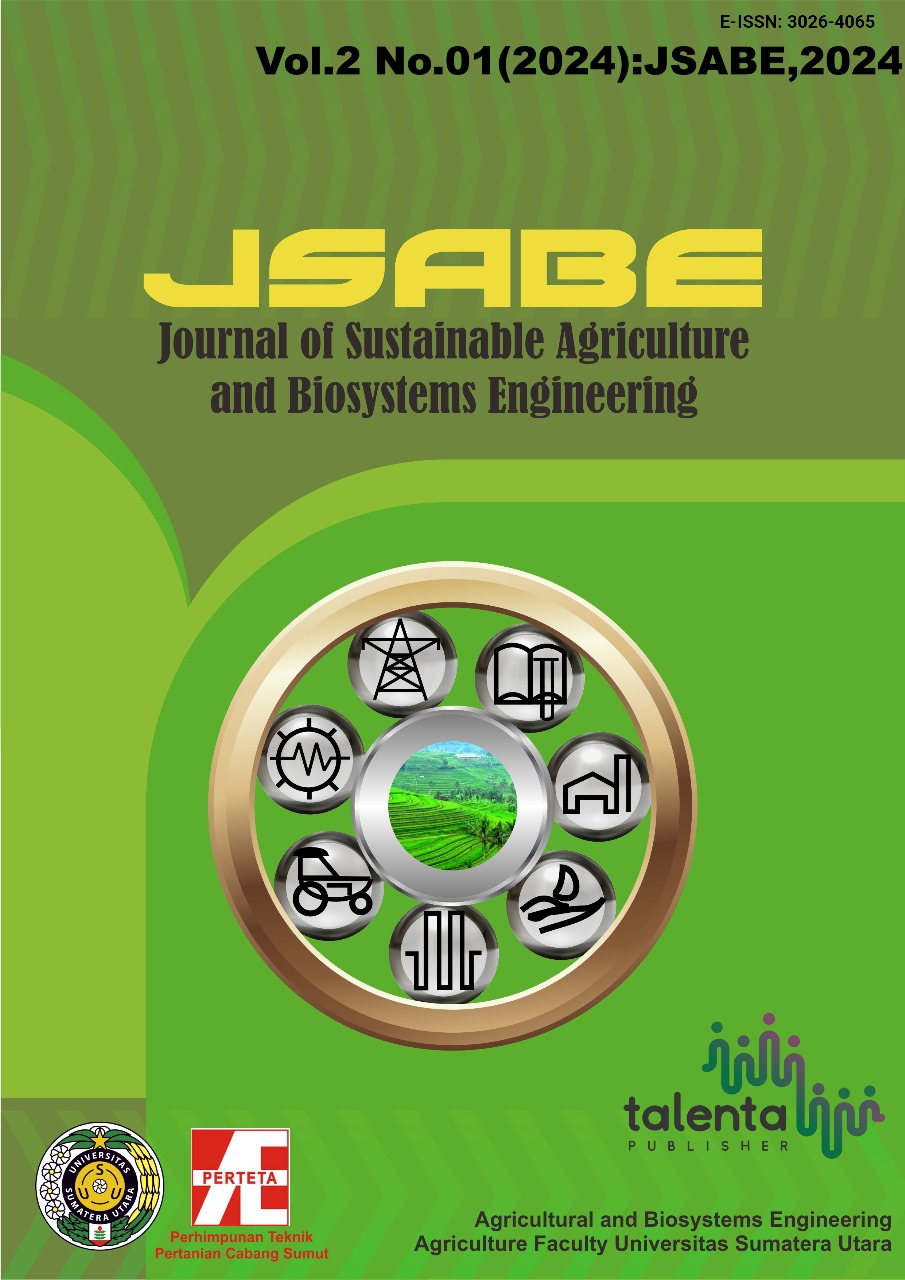Interactive Effects of sowing methods, Phosphorus Fertilization and Varieties on Chickpea (Cicer erietinum L.) Yields Growth in Vertisols
DOI:
https://doi.org/10.32734/jsabe.v2i01.17313Keywords:
Chickpea, Phosphorus, sowing methods, fertilization, vertisolsAbstract
Field experiments were conducted in farming seasons 2020/2021 2021/2022 and 2022/2023 to investigate the effects of fertilization, varieties and sowing methods and their interactions on yield attributes of chickpea on vertisols in Tanzania. Three desi type chickpea varieties (Local check-1, Mwanza-1 and Ukiriguru-1), two fertilizer rates sources (50 and 60 kg P2O5 and control fertility) and three sowing methods (Spacing [30x10]cm, sowing behind plough and broadcasting) and their interactions were evaluated. Experiments were conducted in a factorial arrangement of three replicated randomized complete block design. The size of each plot was (3x3) m. At Tukey’s 95% confidence interval, results reveled that fertilization was significant at (p<0.001) on plant population at harvest, biological yield and grain yield while varieties were significant at (p<0.001) on number of seeds per pod and 500 seeds weight as well as at (p=0.002) on grain yield. 50 kg/ha of 60 kg P2O5 Kg/ha and 50 kg P2O5 kg/ha resulted to 1,255 kg/ha and 709 kg/ha with a least performance recorded on control fertility resulting to 616 kg/ha. On varieties, Ukiruguru-1 resulted to 1,040 kg/ha while Local variety and Mwanza-1 resulted to 735kg/ha and 804 kg/ha respectively. It was concluded that yield attributes of chickpea improved with seed varieties and fertilizer use whereby Ukiruguru-1 resulted to maximum yield per ha as well as 60 kg P2O5 Kg/ha resulted to maximum yield per ha. Therefore, Ukriguru-1 may be cultivated along with 60 kg P2O5 for maximum chickpea yield. Further studies are recommended for appropriate spacing.
Downloads
Downloads
Published
Issue
Section
License
Copyright (c) 2024 Julius Nyaombo, Professor Amos Enock Majule

This work is licensed under a Creative Commons Attribution-ShareAlike 4.0 International License.



